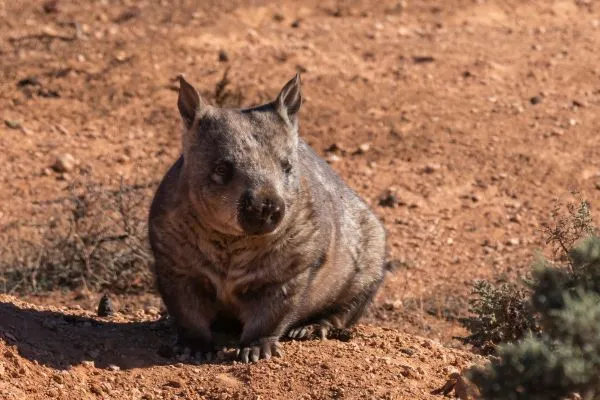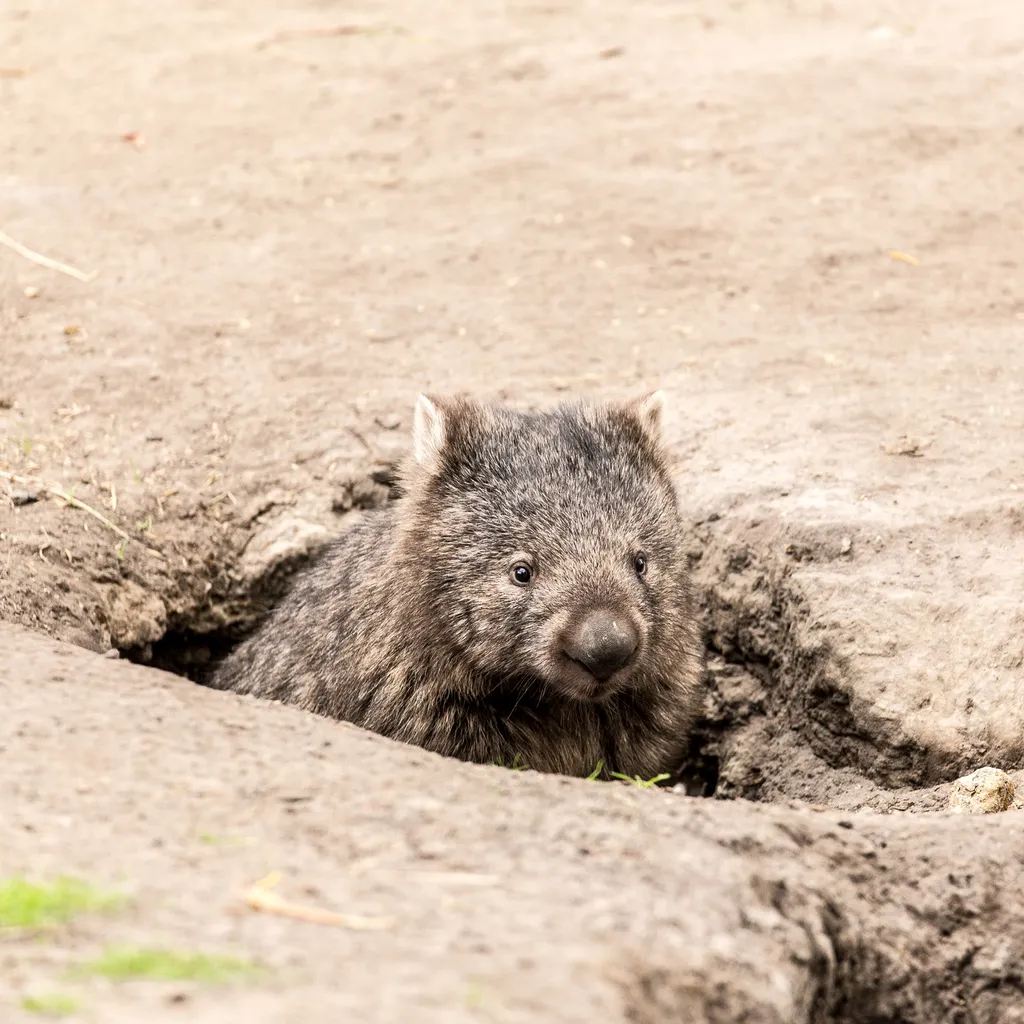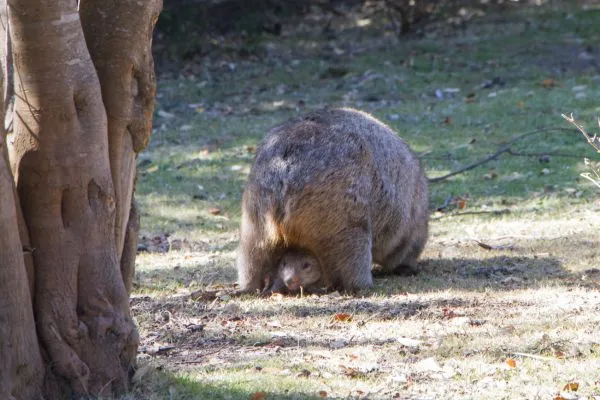Australia is packed with small and intriguing marsupials, and wombats are one of the more familiar. Australia's other marsupials include koalas and kangaroos.
What are wombats?
Wombats are a mostly nocturnal marsupial, endemic to Australia.
How big are wombats?
Wombats aren’t exactly small, being up to a metre long and weighing up to 40kg.
However, today's wombats would have been dwarfed by their enormous ancestor, Diprotodon optatum, which roamed during the Pleistocene Epoch and finally died out about 12,000 years ago.
Giant wombats, as they were known, are thought to be the largest marsupial to have existed, growing to 1.8m at the shoulder and 4m in length, and clocking up almost 3 tonnes in weight.
Where do wombats live?

Flinders Island wombats, a subspecies of common wombats, are numerous across Tasmania and parts of south-east mainland Australia.
Other species include the southern hairy-nosed, found in a region of Australia’s south-central mainland; and the northern hairy-nosed, confined to two locations in Queensland. With just a few hundred individuals left, the latter is now considered one of the rarest land mammals on Earth.
How big are wombat burrows?

Wombats are in fact the planet’s largest burrowing herbivores. They dig using their front claws and push soil backwards with their hind feet and rump. They create subterranean systems up to 30m long and several metres deep, and feature various entrances.
The burrows are used to rest, hide from predators, and keep warm in winter and cool in summer. Wombats tend to have overlapped home ranges with multiple burrows, so these dwellings are often shared.
Wombats are mainly solitary - Groups, when they do occur, are known as ‘wisdoms’.
Wombat poop
Wombats famously pass cube-shaped stools, as many as 100 of which can be excreted in one night. Stacked in a manner reminiscent of stone-balancing, these deposits are used to mark territories and attract members of the opposite sex.
What do wombats eat?
Wombats are herbivores and enjoy a diet of grasses, shrub roots and tree bark.
What are baby wombats called?
A baby wombat is called a joey.
What's special about the wombat pouch?

Like other marsupials, such as kangaroos and koalas, wombats are equipped with pouches for carrying their young.
But while those of most marsupials face the front, a wombat pouch faces backwards. So, if a female is standing with her back to you, you might spy her joey peeping out between her rear legs.
It’s thought that this adaptation prevents the youngster from getting smothered with dirt and the cavity of the pouch filling with soil when the female is burrowing.
Do wombats have any predators?
Wombats are equipped with the ‘world’s deadliest butt’. Comprising thick bone plates that act as armour and with few nerves, their behinds are used to crush predators’ skulls against the roofs of their burrows.
Wombats have few natural predators, particularly on an island, but one creature with a taste for these marsupials has arrived here in the recent past.
In 2012, 15 Tasmanian devils were translocated to Maria Island to provide a back-up population free from devil facial tumour disease, a condition that has wiped out a colossal 80 per cent of the species elsewhere in its range.
Their arrival has brought mixed blessings. Data suggests that they have helped to restore ecological balance to the island by controlling numbers of common brushtail possums, which have been described by scientists as overwhelming the island, but they have also decimated the populations of some of the island’s nesting seabirds.
Monitoring of scat has found that wombats are also a component of the devil’s diet, though there is no evidence that they prey on adults, and there has been no negative impact on Maria Island’s wombat population.
How long do wombats live for?
Wombats can live up to 15 years in the wild.
Want to find out more?
Check out our expert guides, including wildlife you can see in Tasmania and why female kangaroos have pouches.